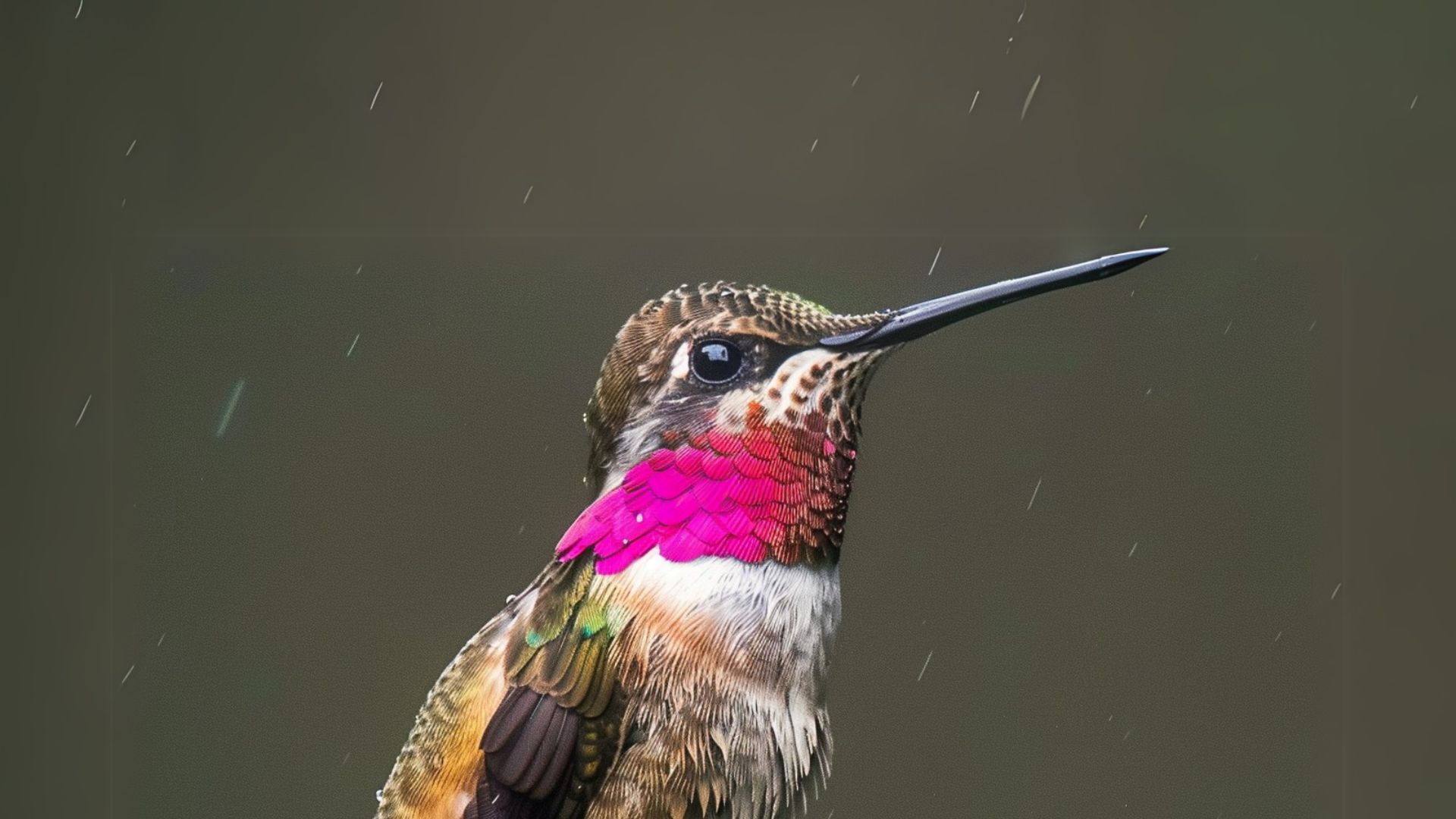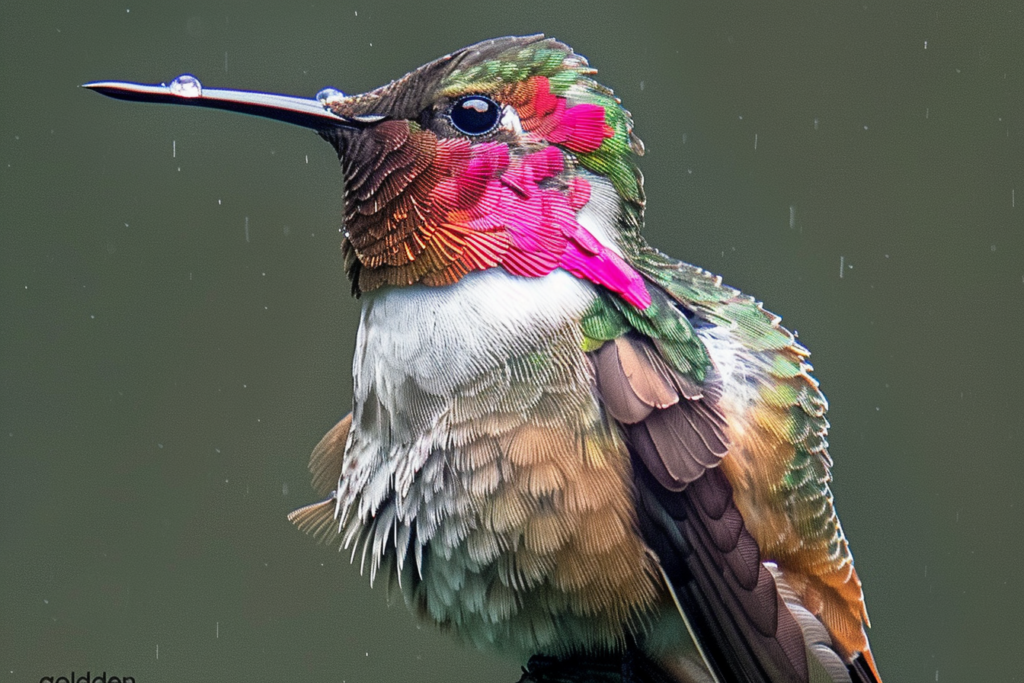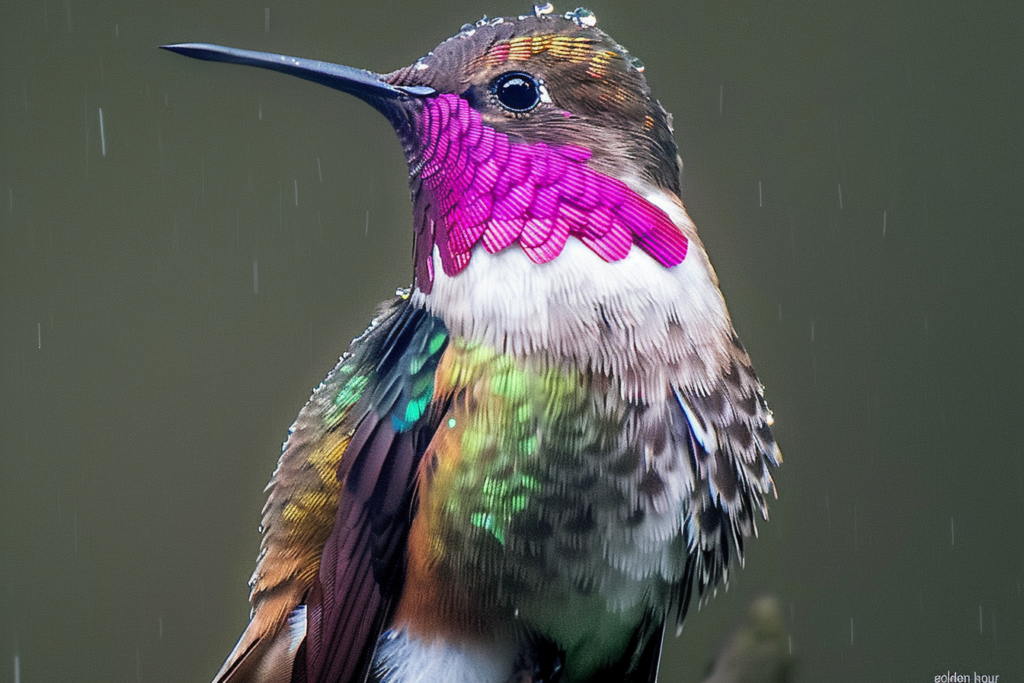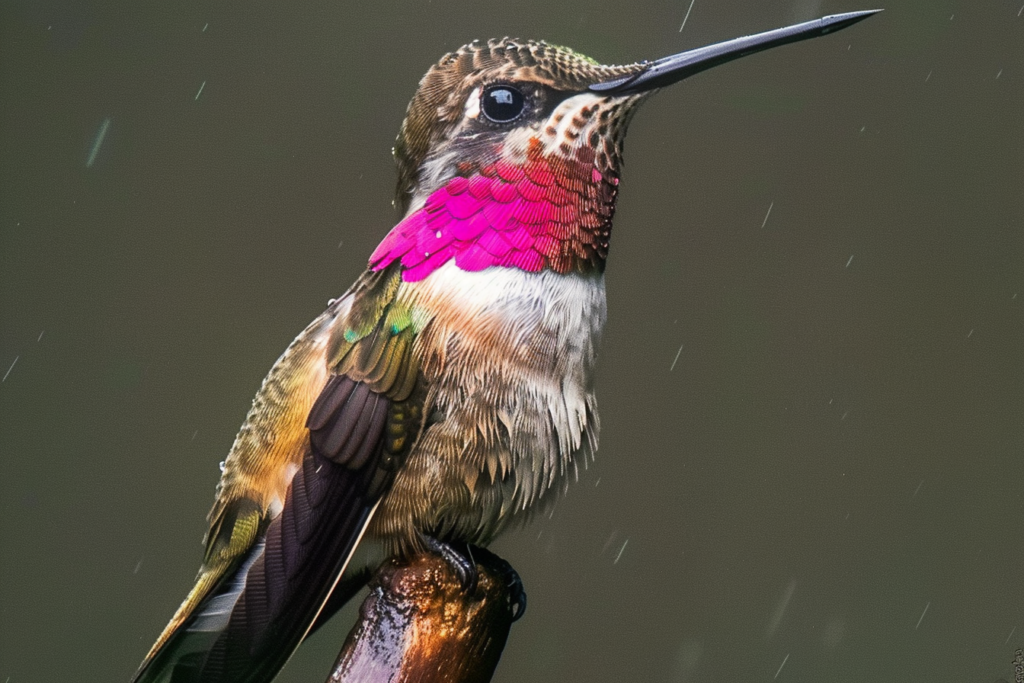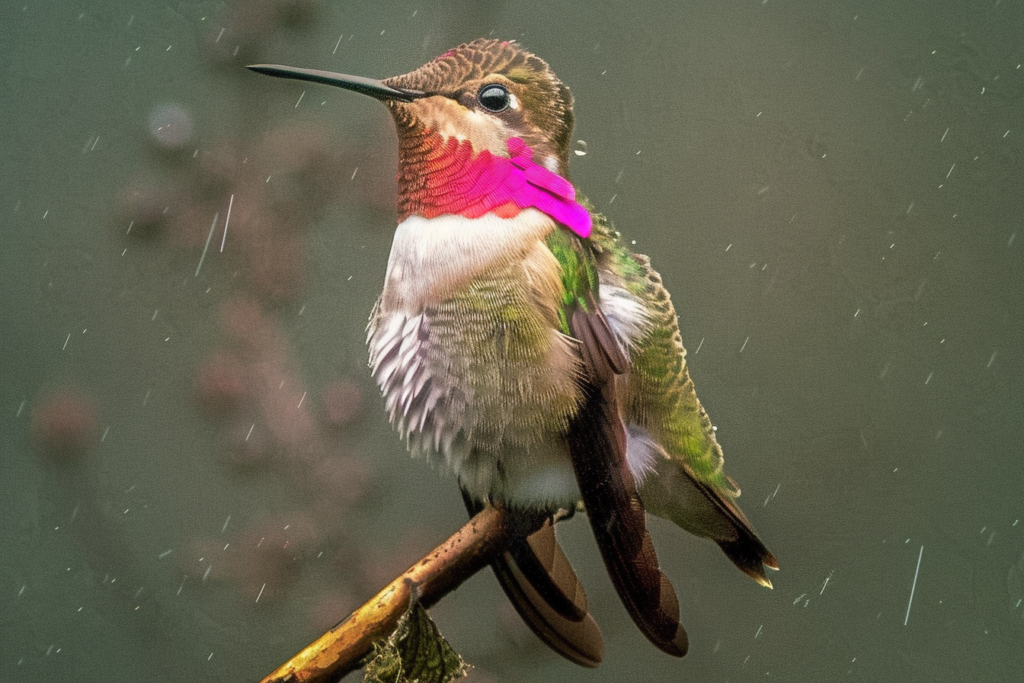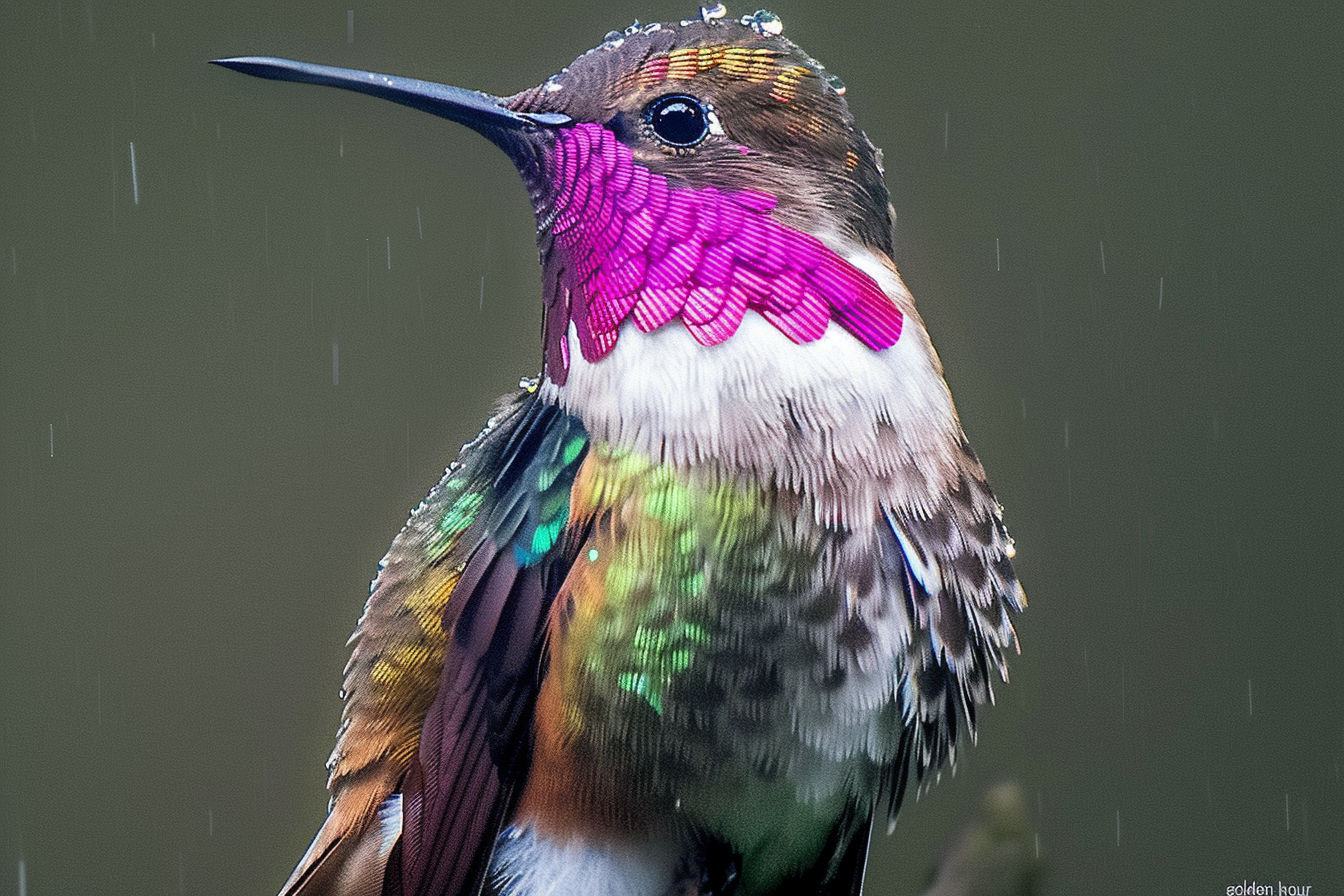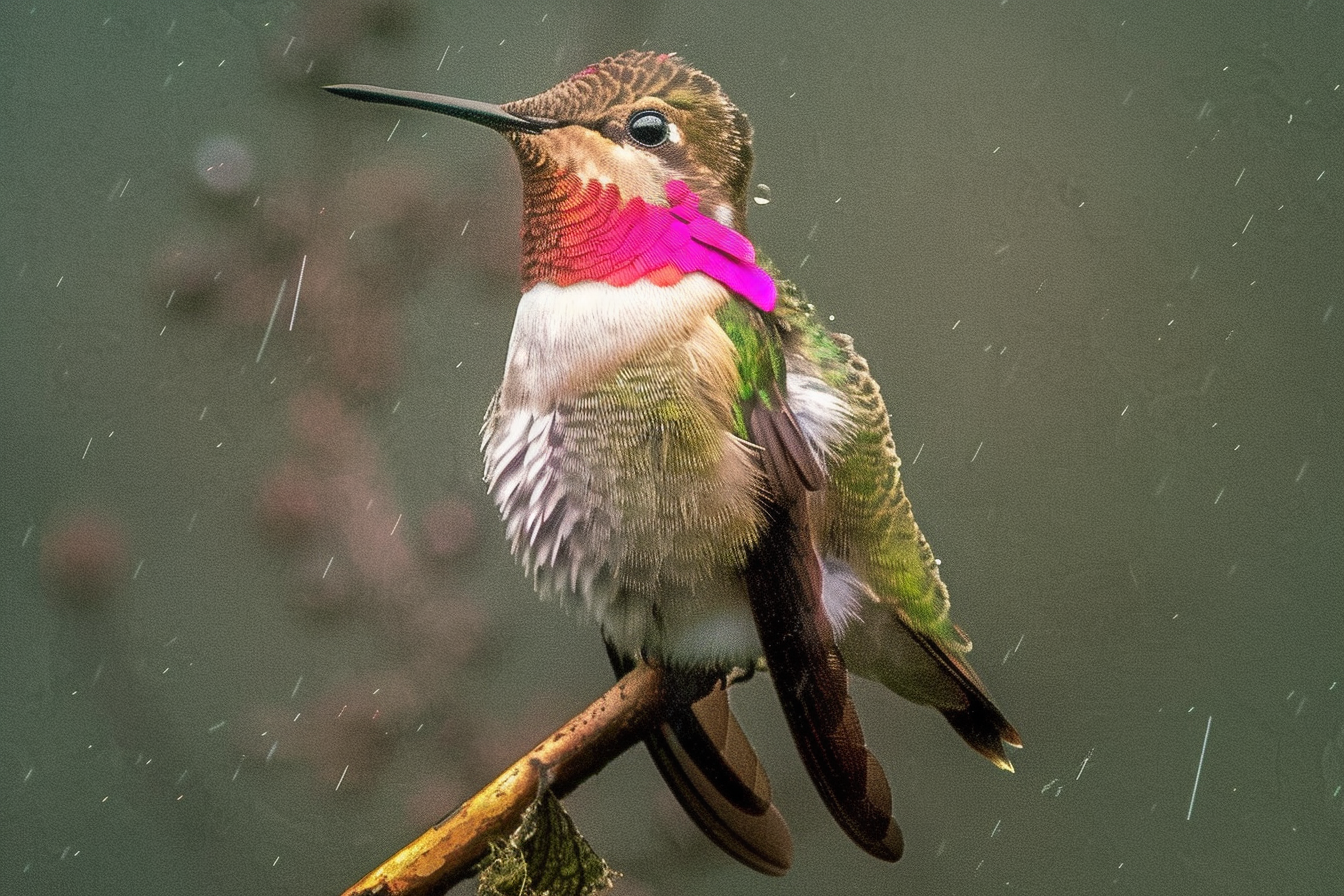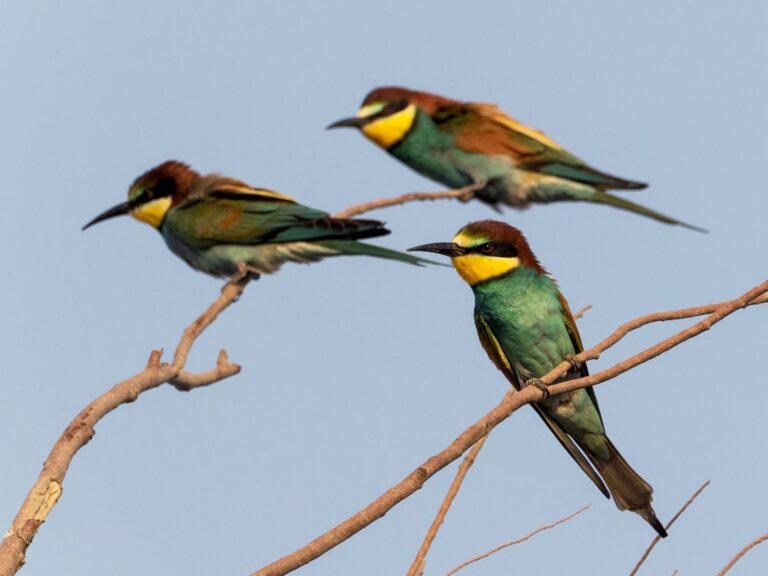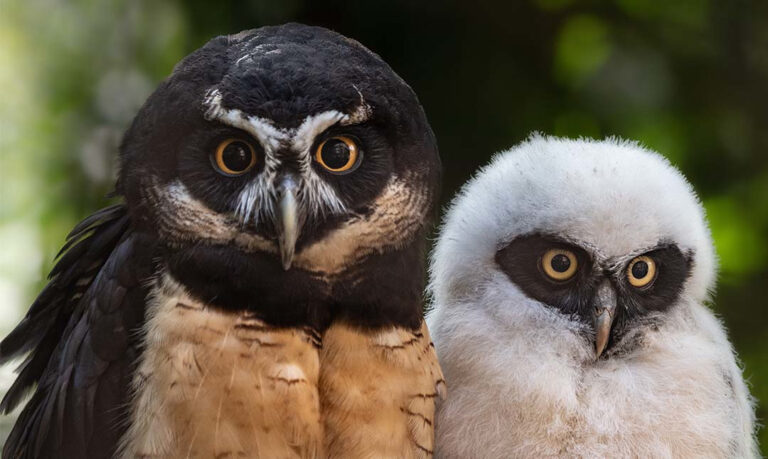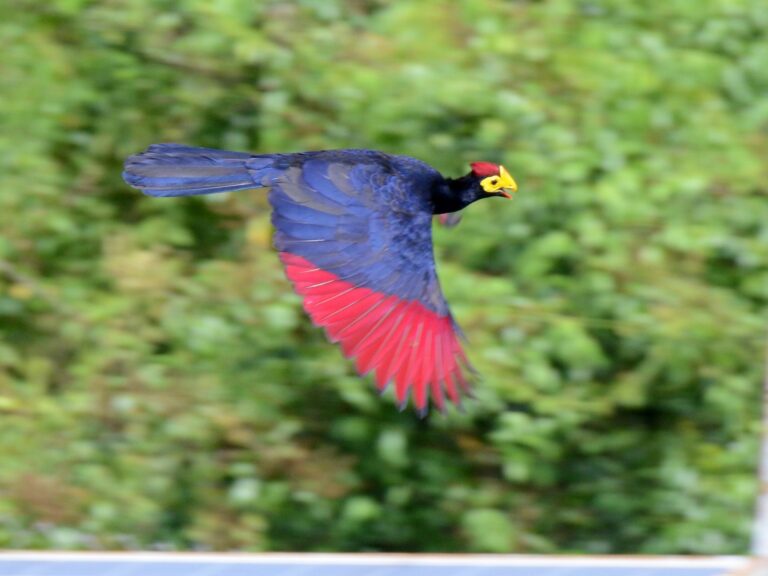Wine-throated Hummingbird: Discover the Brilliant Colors and Unique Habits of This Beautiful Bird
Wine-Throated Hummingbird Overview
The wine-throated hummingbird grabs attention with its vivid colors, tiny stature, and its choice of highland forests for home. Birders and ornithologists alike find this rare species fascinating, mostly because it’s so hard to spot and has such a narrow range.
Scientific Classification
This hummingbird sits within the Trochilidae family—the big hummingbird family. Its scientific name is Atthis ellioti, though sometimes you’ll see it listed as Selasphorus ellioti. Taxonomy gets a bit tangled here, with ongoing debates about where exactly it fits.
It falls under the order Apodiformes. The genus Atthis hangs close to other small Central American hummingbirds. Scientists are still sorting out how Atthis, Selasphorus, and their relatives connect, since they share plenty of traits.
Distinctive Physical Characteristics
This bird is really tiny—just 7 to 8 cm long and weighing around 2 to 2.5 grams. The male’s shimmery, wine-red throat patch (or gorget) is the real showstopper and the reason for its name.
Catch it in the right light and that gorget glows magenta or deep wine, a sharp contrast with the white belly and green back. Males also sport a slightly forked tail and a short, straight bill. Females miss the flashy throat, instead showing pale, spotted throats and duller colors, which actually makes telling them apart in the field a bit easier. Like most hummingbirds, they’ve got compact bodies and zip around with those signature rapid flights.
Range and Distribution
You’ll only find the wine-throated hummingbird in a handful of places: highland regions of southern Mexico, Guatemala, Honduras, and El Salvador. It sticks to humid pine-oak forests and forest edges, usually between 1,500 and 3,000 meters up.
Populations tend to be local and pretty patchy, mostly because their forests keep shrinking. The species doesn’t migrate far, but sometimes shifts around locally when it needs more flowers. If you want to dig deeper into its habitat and range, check out Hummingbirds of North America or similar field guides.
Habitat and Environment
This hummingbird depends on specific forests in Central America. Altitude, climate, and just the right ecological conditions shape where it lives.
Preferred Ecosystems
Moist, high-elevation forests—especially cloud forests—are the wine-throated hummingbird’s sweet spot. These areas have thick vegetation, lots of flowers, and steady humidity.
They’re often spotted along forest edges, in clearings, or where new growth meets older stands of broadleaf trees. These spots offer both food and shelter, which seems pretty ideal.
They do best in places with plenty of epiphytes and shrubs, which means more insects and flowers to eat. While their habitat overlaps with pine-oak forests, they seem to prefer spots with more humidity and a stable canopy overhead.
Altitude and Climate Conditions
You’ll mostly find them between 1,500 and 3,000 meters, with most birds hanging out above 1,800 meters. These elevations stay cool and misty, which is just how they like it.
The weather up there is usually mild or even chilly, with plenty of fog and rain to keep the plants blooming. That’s crucial, since the birds need a constant supply of nectar.
If food gets scarce, they might dip a little lower, but they’re pretty tied to these high, stable forests. Sudden changes—like deforestation or climate shifts—can really threaten their survival.
Key Habitats in Central America
Most wine-throated hummingbirds stick to the mountains of Guatemala, Mexico, and Honduras. Guatemala’s cloud forests are probably their best stronghold, with untouched stretches perfect for nesting and feeding.
In southern Mexico, you’ll find smaller populations in highland patches, often near the edges of reserves or parks. Honduras still has a few groups along its cooler, wooded slopes.
These habitats aren’t just about food—they’re also where the birds breed and find shelter. Conservationists are focusing on these mountain ecosystems, as highlighted in recent research on Central American hummingbirds.
Distribution in Central America
This hummingbird’s range is pretty limited, hugging the mountains and highlands of Central America. Its need for certain elevations and habitats makes every country’s population worth studying if you want to understand how the species is doing.
Populations in Guatemala
Guatemala’s highlands host the most wine-throated hummingbirds. They’re drawn to forest edges, clearings, and anywhere flowers are plentiful. Look for them in places like the Sierra de las Minas, the Cuchumatanes, and the mountains around Lake Atitlán. Most sightings happen between 1,300 and 2,600 meters up.
They turn up mostly in moist pine-oak and cloud forests, wherever native plants offer nectar. Their presence helps make Guatemala’s central highlands a real hotspot for bird diversity. There’s more detail in the Central American Highlands Endemic Bird Area report.
Presence in Mexico
In Mexico, the species sticks to southern highlands, especially Chiapas, overlapping with other hummingbird specialists. They show up at similar heights as in Guatemala—about 1,200 to 2,500 meters. Forest edges, second-growth woods, and gardens near pine-oak or cloud forests are their main haunts.
There aren’t as many as in Guatemala, but they’re still locally common in protected areas. Several Mexican National Protected Areas include these hummingbirds, which helps conservation. More on their occurrence in Mexico’s protected areas.
Occurrence in Honduras
Honduras has fewer wine-throated hummingbirds, and they’re scattered. You’ll find them mostly in highland regions in the west and center of the country. They stick to forests above 1,200 meters—humid montane forests, forest edges, and sometimes coffee farms with shade trees.
Reports say the species is less common and more fragmented here than in Guatemala or Mexico. Their presence highlights how critical it is to protect Honduras’s high-elevation forests for this bird and other local species. Birders and researchers have confirmed them in protected reserves and popular birdwatching spots. For more, check out the distribution of Central American hummingbirds.
Behavior and Ecology
This little hummingbird dazzles with its colors and personality. It stays busy all day, darting around for food and showing off with displays that help it survive and find a mate.
Feeding Habits
Wine-throated hummingbirds go for nectar first and foremost, choosing flowers with long tubes that match their slim bills. In the process, they help pollinate local plants—nature’s tiny gardeners, really.
They don’t just live on sugar, though. Tiny insects and spiders add a protein punch that keeps them fueled. Quick wing beats and nimble hovering let them reach even the trickiest flowers.
Males often stake out a patch of flowers, chasing off rivals with quick, acrobatic flights. You can see this territorial behavior almost daily, especially when flowers are in bloom. The book The Hummingbirds of North America digs deeper into how these birds compete for resources.
Daily Activity Patterns
They’re up with the sun, most active in the morning and late afternoon. That’s when they feed the most and patrol their turf for intruders.
Males put on impressive display flights to woo females and lay claim to their feeding spots. These stunts involve fast, swooping moves and bursts of sound. If you’re curious about how hummingbirds use sound and movement, this study of vocal communication is worth a look.
After all that activity, they’ll tuck into a shady perch to rest and recharge. Their green backs and sparkling wine-colored throats really catch the light during these social moments—hard to miss if you’re lucky enough to see one.
Breeding and Reproduction
Wine-throated hummingbirds have their own style when it comes to courtship and nesting. Males use special displays to attract females, and both sexes work to find safe, hidden spots for their nests. Competition for mates and nesting sites shapes much of their breeding behavior.
Courtship Displays
When breeding season rolls around, male wine-throated hummingbirds get busy showing off for females. You’ll often see them pulling off wild aerial stunts—fast dives, rapid hovering, and flaring those flashy, iridescent throat feathers. That gorget, when the light hits it just right, glows with a wine-colored shimmer that’s hard to miss even from a distance.
These displays aren’t quiet affairs. The males add a soundtrack of buzzing or trilling, which comes from their wings or tail feathers. Those sounds grab the attention of nearby females and let everyone know they’re in top shape. Males don’t always get along—territorial squabbles are common, with aggressive chases and sharp vocalizations breaking out.
Most of the action happens at favorite perches or in open clearings. The brightest, most agile males usually win the day, since these displays show off health and help keep rivals at bay. Vocal communication pops up too, especially during these high-stakes encounters. If you want to dig deeper into how hummingbirds talk and show off, there’s a solid overview of vocal communication in hummingbirds.
Nesting Habits
Females handle all the nest building and chick care. Usually, she picks a thin horizontal branch, tucked away in thick foliage, to keep things hidden. She’ll use soft plant fibers, spider silk, moss, and lichen—materials that help the nest blend in and stay flexible.
The nest itself is tiny, cup-shaped, and just a few centimeters across. She lays two white eggs, then settles in to incubate them for about 15-19 days. She stays alert, only leaving to grab food or chase off intruders.
Once the eggs hatch, the chicks need near-constant attention. The female makes round-the-clock trips for nectar and insects to feed them. Thanks to the nest’s camouflage and placement, predators have a harder time finding it. There’s a more detailed look at hummingbird breeding biology in The hummingbirds of North America.
Conservation Status
The wine-throated hummingbird (Atthis ellioti) currently holds a Least Concern status with the IUCN. Its populations aren’t too fragmented, but ongoing habitat changes and some local threats are still a worry.
Population Trends
Current estimates say the global population is stable, with no signs of a rapid decline. You’ll mostly find this bird in the highlands of Guatemala, Honduras, El Salvador, and southern Mexico.
It’s not rare where conditions are right, but the distribution is patchy. Monitoring efforts use both provenanced and crowd-sourced data to get a better handle on range and numbers. There’s more on how range maps and population data inform conservation.
Some local reports suggest wine-throated hummingbirds might be more sensitive to environmental shifts than a few other species. Ongoing habitat surveillance matters here.
Threats and Conservation Measures
The biggest problems for the wine-throated hummingbird are habitat loss and fragmentation—mainly from deforestation and farms taking over forest patches. In some spots, the places they need for nesting and feeding are shrinking.
Mexico includes this hummingbird in its system of natural protected areas, and international standards offer some extra help. Preserved highland forests are absolutely critical for their survival.
Conservation efforts focus on keeping protected areas intact, pushing for reforestation, and bringing local communities into the loop. International agreements like CITES also help keep any trade in check.
Comparison With Other Species
The wine-throated hummingbird stands out among Central American hummingbirds for its looks and behavior. You’ll spot some interesting differences when you line it up against close relatives in Selasphorus and Atthis, plus a few other similar species.
Selasphorus and Atthis Genera
As a member of Atthis, the wine-throated hummingbird shares a close evolutionary kinship with Selasphorus. Both groups include small, iridescent birds, but there are clear differences in color and the way they use their voices.
Selasphorus species—think rufous and Allen’s hummingbirds—usually show off more coppery or rufous coloring. In contrast, the wine-throated hummingbird (Atthis ellioti) sports that unmistakable wine-colored gorget. Vocalizations aren’t the same, either; studies show a lot of variation in how different hummingbirds sing or call. For more, check out this piece on hummingbird vocal communication.
If you look at their wings, wine-throated hummingbirds have shorter, more rounded wings, while many Selasphorus species have wings that are longer and narrower. This probably connects to where they live and how they feed.
Similar Hummingbird Species
People sometimes mix up the wine-throated hummingbird with the bumblebee hummingbird since they’re close in size and share some habitats. But look closely—the wine-throated has that deep, wine-colored throat and more intense iridescence.
Here’s a quick comparison table to sort things out:
| Species | Throat Color | Range | Size |
|---|---|---|---|
| Wine-throated | Wine-purple | S Mexico, C. America | ~7cm |
| Bumblebee | Pink to magenta | Mexico | ~6.5cm |
| Rufous (Selasphorus) | Orange-red | N. America | ~8cm |
Behavior-wise, the wine-throated hummingbird usually sticks to higher elevation cloud forests, while Selasphorus species can be found across a wider elevation range. Their feeding and nesting habits are closely tied to local blooms, as described in The Hummingbirds of North America.
Interactions With Other Birds
The wine-throated hummingbird shares its world with a range of other birds. These cross-species encounters shape how it feeds, behaves, and uses resources day to day.
Eastern Bluebird
In places where their ranges overlap—usually montane woodlands loaded with flowers—wine-throated hummingbirds and eastern bluebirds sometimes cross paths. The hummingbird goes for nectar, while the bluebird hunts insects and snacks on fruit, so they don’t really compete for food. Still, they might bump into each other at water or on a favorite perch.
Eastern bluebirds aren’t aggressive toward smaller birds like hummingbirds. But both get territorial around their nests, especially when breeding. You’ll see some vocal scolding or quick movements to warn off trespassers. Minor squabbles over perches do happen, but nothing too dramatic.
Bluebirds help out, in a way, by keeping insect numbers down, which could mean fewer threats for the hummingbirds’ nests. You might catch them in mixed flocks, but their interactions are usually quick and pretty peaceful. There’s more on hummingbird vocal communication and territoriality in Basis of the Vocal Communication in Hummingbirds.
Bushy-Crested Jay
The bushy-crested jay, a bold corvid native to Central America, often hangs out in the same highland forests as the wine-throated hummingbird. Compared to bluebirds, jays are bigger and much more assertive, moving in noisy groups and eating just about anything—fruit, insects, and sometimes even eggs or nestlings.
Since the hummingbird mostly feeds on nectar, direct competition with the jay is rare. But because jays raid nests and stir up trouble for smaller birds, wine-throated hummingbirds stay extra alert when jays are nearby.
You’ll see hummingbirds dart away from flowers or pull off sudden display flights when jays get too close. Jays might chase them off a feeding spot, but usually don’t go after them unless they’re defending food or nests. Hummingbirds often switch to less obvious flowers or feed during quieter times to avoid the chaos. The way these birds interact in mixed communities gets covered in The Hummingbirds of North America.
Frequently Asked Questions
Wine-throated Hummingbirds are small, distinctive birds that stick to certain highland habitats. Their habits, favorite places, and unique looks set them apart from their relatives.
What distinguishes female Wine-throated Hummingbirds from males?
Females don’t have the flashy magenta or wine-colored gorget that males show off. Instead, females have a pale throat, greenish upperparts, and white underneath. Males are a bit smaller and much more iridescent on the throat and head.
How does the feeding behavior of Wine-throated Hummingbirds differ from other hummingbird species?
Wine-throated Hummingbirds hover at flowers like most hummingbirds, but they’re known for sticking close to low, shrubby growth at forest edges—not just open gardens or woods. They’ll hit tubular flowers and feeders, but seem to prefer spots with dense cover. You’ll notice their pickiness if you watch them choose certain flowers or defend feeding patches. There’s more about this in guides to regional hummingbird habitats.
What habitat is preferred by Wine-throated Hummingbirds?
They stick to highland forests, forest edges, and dense, shrubby spots. You’ll mostly find them between 1,500 and 2,500 meters in Mexico and northern Central America. They show up more often in undisturbed, moist woods where flowers are plentiful.
What are the migration patterns of Wine-throated Hummingbirds?
Wine-throated Hummingbirds usually stay put within their highland range. They don’t migrate long distances, though they might move around locally as flowers bloom. Mostly, they hang out in the same general area year-round.
How can one attract Wine-throated Hummingbirds to their garden?
If you’re hoping to spot Wine-throated Hummingbirds flitting around your garden, try planting native flowering shrubs or tubular blooms loaded with nectar. Hummingbird feeders filled with sugar-water work well too—just aim for a setup that feels a bit wild and shrubby, like their natural hangouts. Oh, and don’t forget to leave some quiet, sheltered corners; these little birds seem to appreciate a spot where they won’t get disturbed.
What are the primary threats to Wine-throated Hummingbird populations?
Habitat loss hits hard—deforestation and land getting cleared for farms chip away at where these hummingbirds can live. When native flowering plants disappear, their food sources dry up fast. People trying to help focus on saving highland forests and keeping those ecosystems varied, which feels pretty essential if we want these little birds to stick around. You’ll find more on this in some regional bird identification guides.
